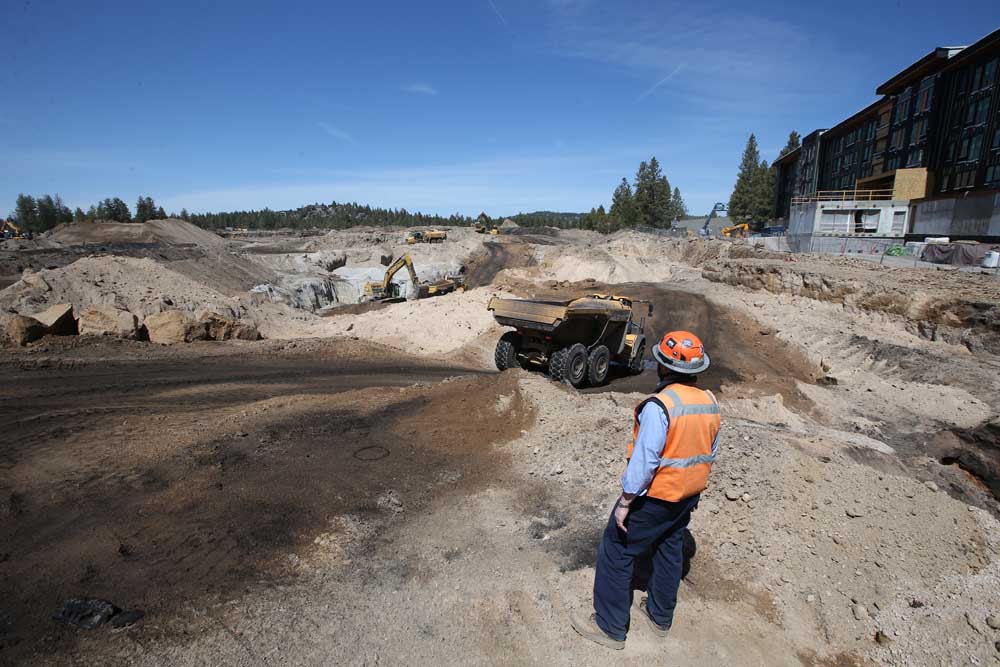Business Oregon grants OSU-Cascades funds to fuel innovation
Published 5:45 am Tuesday, April 23, 2024

- Jarrod Penttila, associate director for capital planning and construction at Oregon State University-Cascades, right, watches excavation work on Monday in Bend on 8 acres of what will eventually be a 24-acre mixed use area where businesses, research and commercial ventures can all forge a community to incubate economic development.
Supporting innovation is a key component to growing a vibrant small-business community, and the Oregon State University-Cascades Innovation District and hub are ways to incubate that, economists say.
Innovation is at the heart of entrepreneurship, increasing productivity and fostering economic growth in a region. Oregon has 10 innovation hubs scattered around the state to support high tech, science and innovation, including the one at OSU-Cascades, said Jordana Barclay, Business Oregon innovation strategist.
Trending
Last week, the state’s economic development agency gave $2.6 million to support innovation hubs to bolster the development of high-growth scalable businesses in the science and tech fields in Oregon.
The state agency granted OSU-Cascades $425,000, the second largest award behind Portland State University’s award of $750,000.
“We hear entrepreneurs say that they don’t know how or where to go if they have an innovative idea,” Barclay said. “There’s a lot of resources out there but they’re often siloed. The intent of the hubs is to bring resources together, coordinate and have one place to come.”
The funds are there to support the Innovation Hubs, not districts. Other sources of funding are available for entire districts, Barclay said.
In Bend, OSU-Cascades has a two-prong approach to supporting innovation: a district and a hub.
The college has a hub, called the Innovation Co-Lab, which launched in 2018 as an incubator for startups. But last year, the director left and the university plans to use part of the grant funds to hire a new director, said OSU-Cascades Chancellor Sherman Bloomer.
Trending
The Co-Lab was created as a place where students connected with businesses and businesses were nurtured. The goal is to reconnect students through similar programs once a new director is hired. Then the Innovation Hub can evolve, Bloomer said.
“The idea is to bring a hub of resources for the region that have an idea or are looking for similar space, or advice,” Bloomer said. “The hub is something that coordinates resources.”
Eventually the Co-Lab will be moved to the district area, which is being built on the southeast corner of the campus off Century Drive. The university had asked Business Oregon for $539,000 to fund the hub with a $280,000 matching grant. Bloomer said the university will have to reach out to other sources to make up the difference.
Innovation Co-Lab gives OSU-Cascades students working world experience
An Innovation Hub will also bring together all the various stakeholders in promoting business growth and in the region, said Jon Stark, Economic Development for Central Oregon CEO.
“The funding marks a pivotal step forward in our economic development by creating an Innovation Hub, fueling additional resources, academic leadership and systems to enhance the existing backbone of our strong entrepreneurial ecosystems,” Stark said. “The hub will optimize access and guide entrepreneurs to valuable resources helping commercialize and scale new technologies, services and products.”
While the amount is small compared to the economic impact, and the number of jobs created by small businesses, it will support innovation, said Damon Runberg, Business Oregon economist.
Central Oregon cultivates entrepreneurs
“In Oregon we are generally pretty innovative,” said Runberg. “However, over the past five years we’ve become less innovative. The glaring red flag has been our workforce.”
In 2022, Oregon’s population declined for the first time in decades, according to estimates from the U.S. Census Bureau. But Central Oregon was one of the fastest growing regions in the state, according to the census data.
It’s the population whipsawing that is causing Oregon to lose its edge because the state can’t produce a large enough workforce to attract new businesses, Runberg said. Funding innovation hubs goes a long way toward helping ease that erosion.
“It’s critically important that we address these labor shortages,” Runberg said. “Innovation creates higher wage jobs and higher wage jobs help with recruitment in a tight labor market.”
Currently heavy equipment is moving earth on 8 acres of what will eventually be a 24-acre mixed use area where businesses, research and commercial ventures can all forge a community to incubate economic development. The area of the district encompasses the former county demolition landfill and is funded by the Legislature, the university system and the federal Environmental Protection Agency, said Bloomer.
Once the land has been cleared, the university will seek proposals from the private sector to build a 50,000-square-foot building to house the hub, research and development, networking, industry and retail space, Bloomer said.
The goal is to have something completed in the next three to five years.








